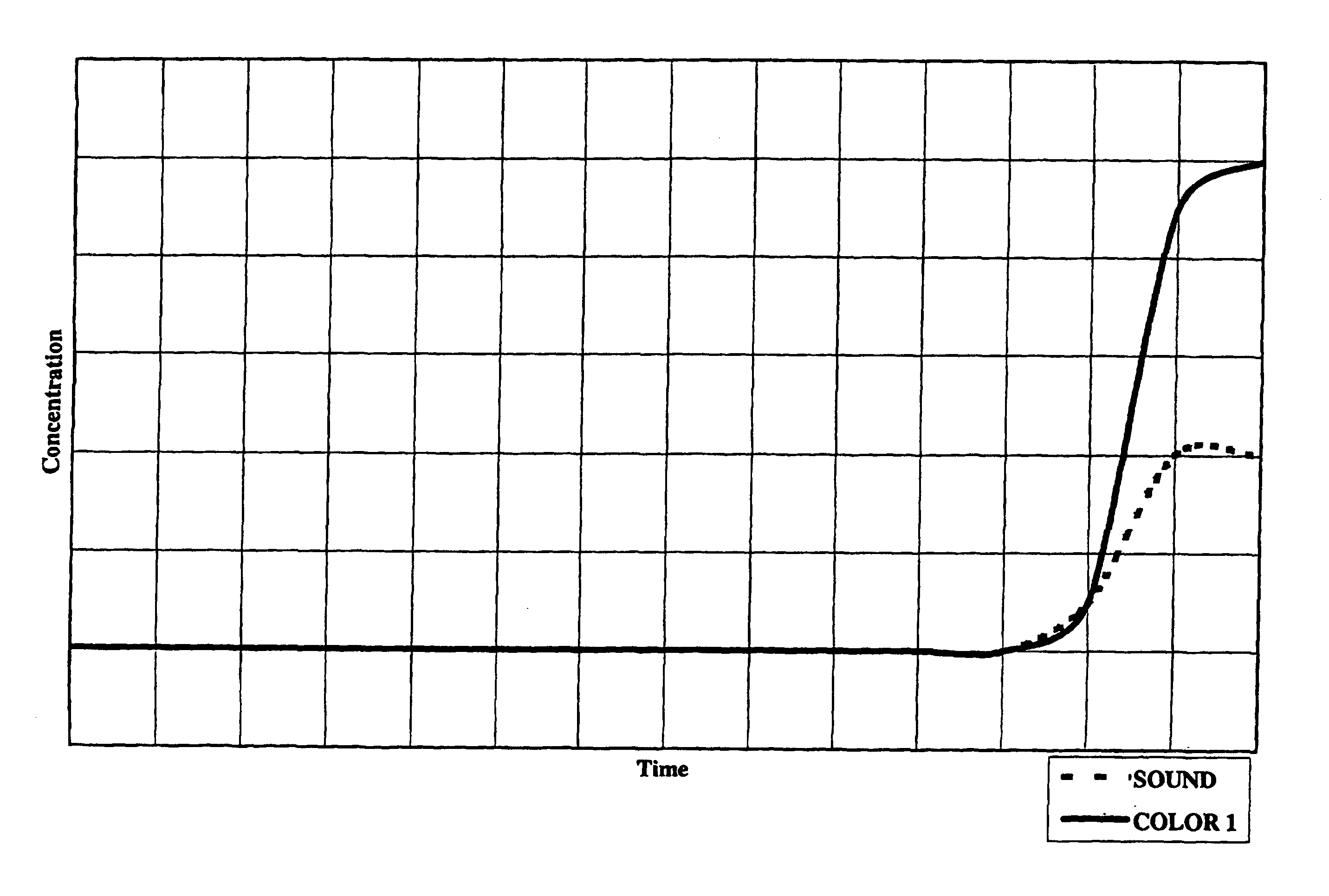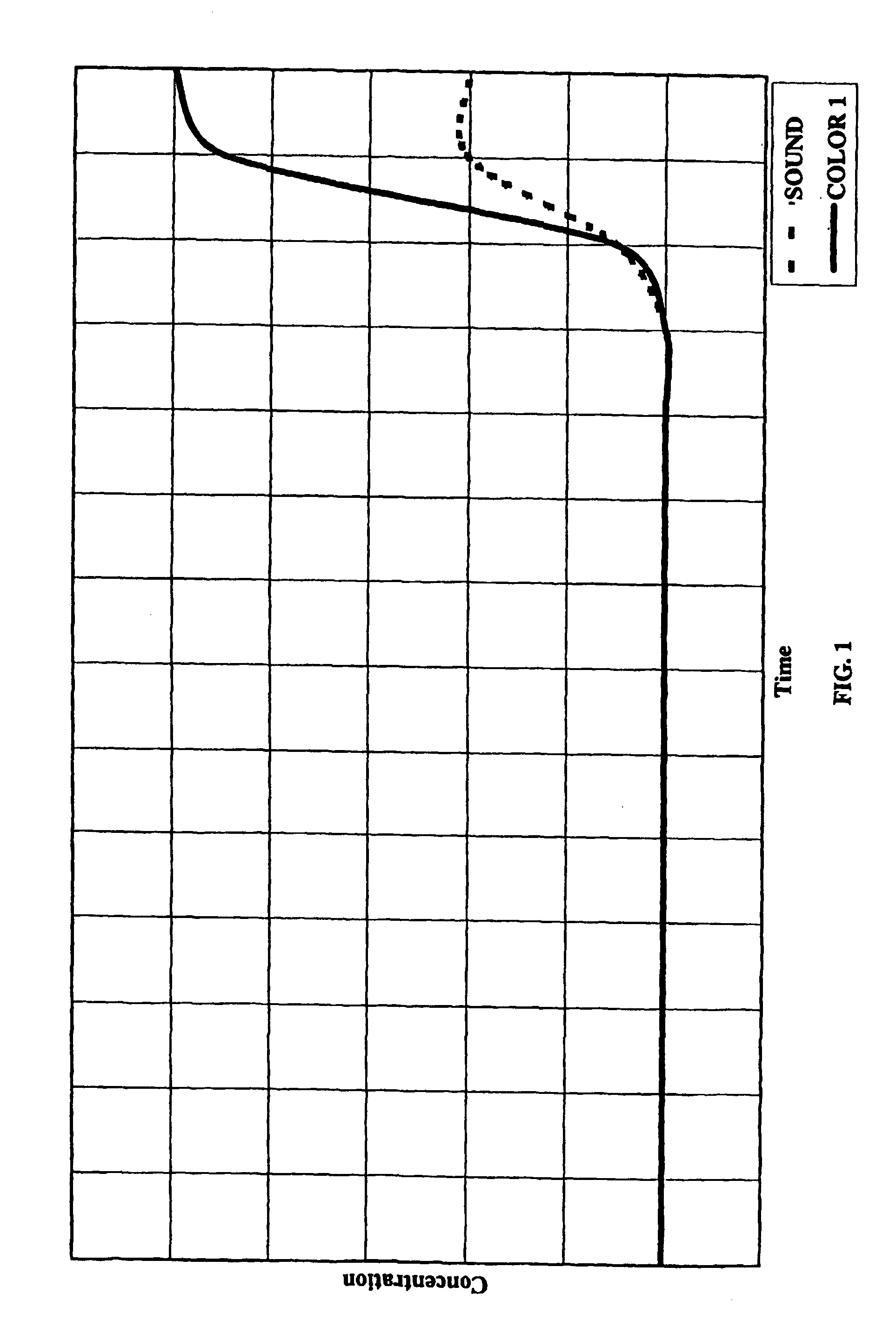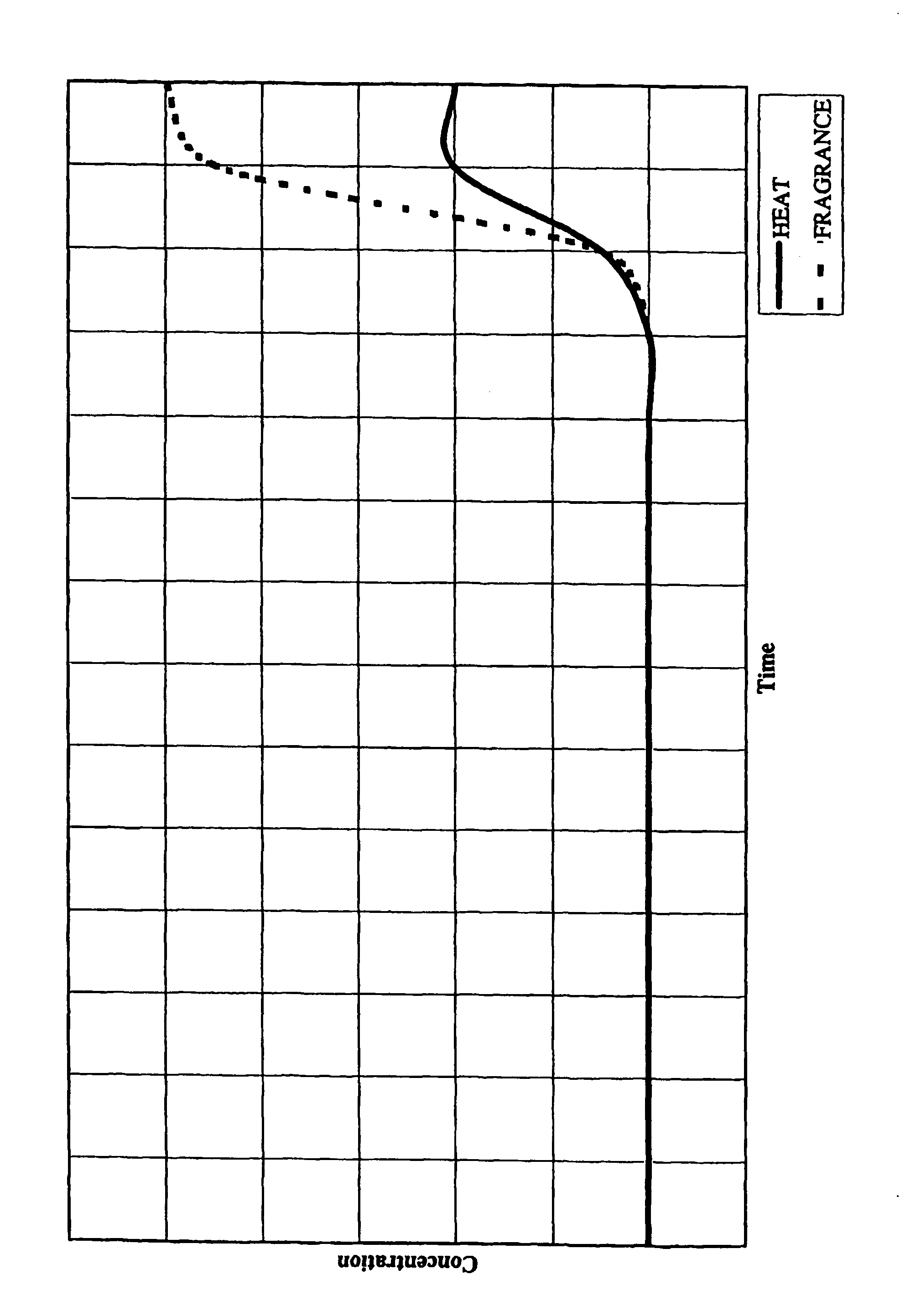Aqueous activated components conveyed in a non-aqueous carrier system
a carrier system and activated component technology, applied in the direction of synthetic polymeric active ingredients, hair cosmetics, perfume formulations, etc., can solve the problems of not meeting hand washing guidelines, embarrassingly and unacceptably low compliance with hand washing guidelines, and reducing bacterial populations, so as to increase or decrease the probability of coincidence, the effect of reducing the probability of attaining a discrete even
- Summary
- Abstract
- Description
- Claims
- Application Information
AI Technical Summary
Benefits of technology
Problems solved by technology
Method used
Image
Examples
example 1
[0057] A composition may be prepared by adding the following components: 132 parts of glycerol, 100 parts of sodium lauryl sulfate, 20 parts of aloe vera gel, 20 parts of vitamin A gel, 20 parts of vitamin E gel and 30 parts of nonylphenoxypolyoxyethylene ethanol (12 moles EO). When blending is complete, one may thicken the mixture by adding 12 parts of an aqueous solution of polyarylamide (12% w / w) and neutralizing to a pH of 7.0+ / −0.2 using a 45% solution of potassium hydroxide. A yellow dye encapsulated with polyvinyl alcohol capsule having a wall thickness allowing dissolution in about 4 seconds to about 6 seconds, and a blue dye encapsulated with polyvinyl alcohol having a wall thickness allowing dissolution in about 12 seconds to about 15 seconds may be added to the aforemention solution by adding 5 parts of the yellow capsules and 5 parts of the blue capsules. The mixture can be mixed to create a homogeneous blend.
[0058] A useful amount of the above composition may be applie...
example 2
[0059] The composition described in Example #1 may be reproduced except that the capsule containing yellow dye is replaced with a capsule containing lime oil fragrance, also within a polyvinyl alcohol capsule.
[0060] A useful amount of this composition may be applied to the hands with the addition of a small amount of water. The effect that may be seen is initially heavy white foam followed shortly with the distinct smell of lime, and with additional time and rubbing the change from white to blue foam. The hands may be rinsed with water.
example 3
[0061] In like manner as described in Example #1 a hand cleaning composition may be prepared by adding the following components: 140 parts polyethylene glycol (200), 90 parts of isooctylphenoxypolyoxyethylene ethanol (40 moles EO), 25 parts aloe vera, 20 parts of rose water in glycerin and 30 parts polyoxyethylene ethanol tridecyl ether (18 moles EO)
[0062] Once the blending is complete, one may thicken the solution by adding 8 parts of carboxy methyl cellulose. The pH is adjusted to 8.7 using the required amount of sodium carbonate. At this point one may introduce timed changes of color and sound by using an encapsulated and an encapsulated acidic compound. A red dye is encapsulated with polyvinyl pyrrolidone and having a wall thickness allowing for dissolution in 15 seconds. Sodium acetate is similarly encapsulated with polyvinyl pyrrolidone with a wall thickness allowing dissolution in 5 seconds. 5 parts of each of the two capsule types are added and mixed to create a homogeneous...
PUM
| Property | Measurement | Unit |
|---|---|---|
| time | aaaaa | aaaaa |
| time | aaaaa | aaaaa |
| duration of time | aaaaa | aaaaa |
Abstract
Description
Claims
Application Information
 Login to View More
Login to View More - R&D
- Intellectual Property
- Life Sciences
- Materials
- Tech Scout
- Unparalleled Data Quality
- Higher Quality Content
- 60% Fewer Hallucinations
Browse by: Latest US Patents, China's latest patents, Technical Efficacy Thesaurus, Application Domain, Technology Topic, Popular Technical Reports.
© 2025 PatSnap. All rights reserved.Legal|Privacy policy|Modern Slavery Act Transparency Statement|Sitemap|About US| Contact US: help@patsnap.com



